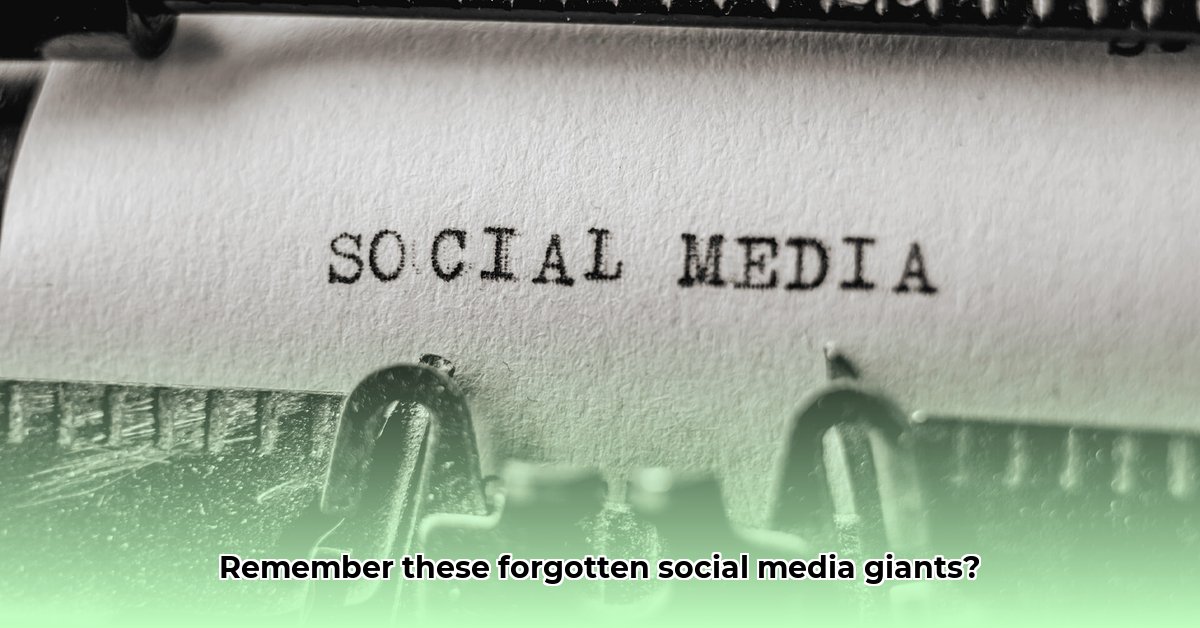
Nostalgia Social Media Platforms: A Blast from the Past
Remember painstakingly crafting your MySpace profile? The hours spent tweaking the HTML (HyperText Markup Language – the code that makes websites work), searching for the perfect background image, and meticulously curating your playlist? These weren't just websites; they were digital reflections of ourselves. Before MySpace exploded onto the scene, there was Friendster, igniting a whole new era of online interaction. LiveJournal followed, a haven for personal blogs, fostering deeper connections and self-expression. Unlike today's streamlined platforms, these encouraged creativity. Each profile was a unique digital artwork, showcasing individual tastes and passions. And who could forget AIM (AOL Instant Messenger), the instant messenger that defined a generation? That distinctive "You've got mail!" sound, real-time chats, and status updates – these details fundamentally shaped how we interacted online. Did you ever wonder how many hours were collectively spent on these platforms? Research suggests that billions of hours were dedicated to these pioneering social networks. For a deeper dive into these early platforms, check out this list of old social media sites.
The Rise and Fall of Digital Empires
These nostalgic platforms weren't merely fleeting trends; they profoundly impacted online culture. Friendster, for example, pioneered many social networking features we now take for granted. MySpace took it further, allowing extensive customization, transforming online profiles into deeply personal spaces. LiveJournal carved a unique niche by focusing on blogging and personal expression, nurturing a sense of community among users with shared interests. AIM, of course, revolutionized instant messaging, transforming real-time communication.
But what caused their decline? Several intertwined factors likely contributed. The smartphone revolution drastically changed the online landscape. Mobile-first platforms like Facebook and Twitter (now X) surged in popularity, leaving many desktop-centric platforms struggling to adapt. Their inflexible designs, compared to the sleek simplicity of newer platforms, made them less appealing. Many struggled with scalability and monetization; some couldn't handle the rapid user growth, leading to sluggish performance and frustrating experiences – Friendster's struggles serve as a prime example. Innovation also played a crucial role. Platforms that survived successfully adapted to changing user preferences and technological advancements; those that failed to evolve gradually lost relevance.
The shift wasn't solely technological; it also involved evolving user expectations. The desire for simpler, more efficient interfaces, coupled with the increasing demand for mobile access, pushed many users toward newer platforms. This isn't to say the older platforms were inherently flawed; rather, they couldn't keep pace with the rapidly evolving technological and social landscapes, ultimately contributing to their decline. This begs the question: could these platforms have survived if they had adopted a mobile-first strategy earlier?
The Unexpected Comeback: A Nostalgic Revival
Surprisingly, many of these platforms are experiencing a resurgence. Why? Nostalgia plays a crucial role. Many users are drawn to the simpler, less algorithm-driven experiences of the past. They crave the personal control and self-expression often lacking on modern platforms. The emphasis on genuine community, rather than endless engagement metrics, also appeals to users tired of the complexities and often overwhelming nature of contemporary social media. This revival isn't just about reminiscing; it represents a pushback against the algorithmic control prevalent in today's online spaces. People value the sense of ownership and connection these older platforms offered. This renewed interest highlights a core truth: the human need for authentic connection transcends technological advancements.
Some experts, like Dr. Anya Petrova, Professor of Sociology at the University of California, Berkeley, suggest this resurgence could be a response to the perceived superficiality and negativity often associated with current platforms. The simpler, more authentic interactions of the past appeal to those who desire a more genuine online experience. Ongoing research explores the psychological and social drivers behind this nostalgic preference, examining the roles of community, identity, and the human desire for simpler times. However, it's still too early to definitively predict the long-term impact of this trend.
Lessons from the Digital Past: Actionable Insights
The resurgence of these nostalgia-driven platforms offers valuable insights for various stakeholders.
For Businesses: Leverage retro aesthetics in marketing; explore potential partnerships with revived platforms. Long-term, develop immersive nostalgic experiences; potentially even recreate aspects of these platforms in a modernized way.
For Social Media Researchers: Examine the cultural impact of past platforms; investigate the psychological reasons for the revival. Long-term, predict the future of social media by understanding the shift in user preferences and the enduring appeal of simpler designs.
For Platform Developers: Study the design elements that contributed to the success of past platforms; incorporate these into current designs. Long-term, create niche platforms mimicking the positive aspects of older designs; integrate AR/VR (Augmented/Virtual Reality) to enhance user experience.
For Marketers: Use targeted advertising that taps into shared memories and sentimentality; create campaigns that resonate with nostalgia. Long-term, tailor marketing efforts to appreciate the user's preference for customization and authentic community building.
This shift towards nostalgic platforms isn't simply a passing trend; it highlights a fundamental human need for meaningful connection and authentic self-expression. The past teaches valuable lessons about the enduring power of community and genuine online interactions in the continuously evolving digital sphere. The future of social media may well involve a blend of modern technology and the timeless appeal of simpler, more community-focused online experiences.